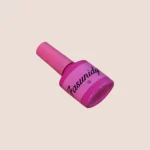Nails are not just protective layers for our fingers; they are also a reflection of our overall health. Healthy nails are typically smooth, strong, and uniformly colored. However, many people might overlook the health of their nails. This article will introduce some simple methods to help you check if your nails are in good condition.
- Observe the Shape and Texture of Your Nails
- Smoothness: Healthy nails should have a smooth surface without noticeable bumps or ridges.
- Color: Normal nail color is a healthy pink. If you notice white, yellow, or black spots, further examination might be necessary.
- Thickness: Nails should not be excessively thick or thin; excessive thickness could be a sign of a fungal infection.
- Inspect the Skin Around Your Nails
- Skin Around Nails: The skin around healthy nails should be smooth, without redness or inflammation.
- Hangnails: The presence of hangnails might indicate a lack of vitamins or dry skin.
- Pay Attention to Nail Growth Rate
- Growth Rate: Nail growth varies from person to person, but typically grows about 3 millimeters per month. An unusually fast or slow growth rate could be related to health issues.
- Observe the Nail’s Lunula
- Lunula: The white, half-moon-shaped area at the base of the nail is called the lunula. The size and shape of the lunula can reflect certain health issues. Typically, the lunula occupies about 1/5 of the nail.
- Check the Nail’s Flexibility
- Flexibility Test: Gently bend your nails; healthy nails should have some flexibility and not break immediately.
- Note the Nail’s Moisture Level
- Moisture: Healthy nails should maintain an appropriate level of moisture, neither too dry nor too wet. Dry nails are prone to breaking, while overly moist nails might be susceptible to infections.
- Observe the Nail’s Texture
- Texture: The surface of healthy nails should be smooth without noticeable lines. If you see vertical or horizontal lines, it could be a sign of poor nutrition or excessive stress.
- Check for Abnormalities in the Nails
- Abnormalities: Nails that are indented, raised, or have irregular shapes might be associated with certain diseases, such as psoriasis or thyroid issues.
Conclusion
By using the methods mentioned above, you can preliminarily determine whether your nails are healthy. If you notice any abnormalities, it is advisable to consult a doctor or a professional dermatologist in a timely manner. Maintaining a healthy lifestyle, such as a balanced diet, regular exercise, and avoiding excessive use of chemicals, is also an important way to maintain nail health.






